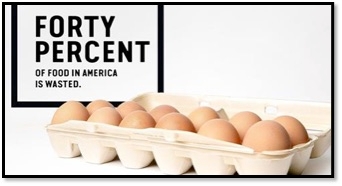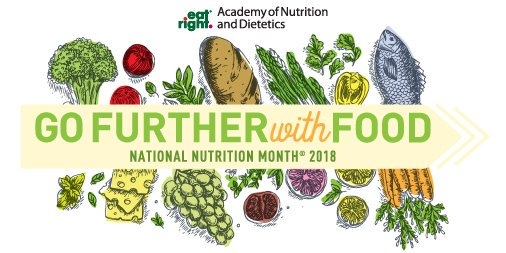
Posts Tagged: prevention
Announcing California's inaugural Food Waste Prevention Week
UC Agriculture and Natural Resources and the Nutrition Policy Institute are pleased to announce March 5 - 9, 2018, as California's inaugural Food Waste Prevention Week. During this week, a range of partners statewide, including the Governor, the Secretary of Agriculture, the State Superintendent of Public Instruction, as well as many other agency leaders in public health, natural resources management, nutrition, and other sectors, are coming together in an unprecedented collaboration to raise awareness about the impacts of food waste in our homes, workplaces and communities.
This collaboration grew out of a meeting held in February 2017 in which the Public Health Alliance of Southern California and the UC ANR Nutrition Policy Institute jointly convened state agencies delivering nutrition education programming to discuss the impacts of food waste and strategize solutions the agencies could advance together. The planning group identified an opportunity to generate and issue shared messaging during National Nutrition Month, a goal that has evolved into California's inaugural Food Waste Prevention Week, a coordinated multi-sector effort to raise awareness about the economic, environmental and social impacts of food waste in California.
Food waste is a significant issue. The United States is losing up to 40% of its food from farm to fork to landfill. That translates to $218 billion lost, including costs of food to consumers and retailers, as well as costs of wasted water, energy, fertilizer, cropland, production, storage and transportation. CalRecycle estimates that Californians throw away almost 12 billion pounds of food each year – 18% of all landfill use in this state. The food in landfills decomposes and releases methane, a powerful greenhouse gas linked to climate change.
In addition, that food loss could have fed people, not landfills, if only it had been used, instead of tossed. In California, nearly 5 million people are food insecure, lacking consistent access to enough food. Roughly 1 in 8 Californians are experiencing hunger, and 1 in 5 of those are children.

Reducing food waste requires action by partners throughout the food system. During Food Waste Prevention Week, stay tuned to the Nutrition Policy Institute Twitter page and the UC ANR Twitter and Facebook pages for food waste prevention resources, tips and ideas.
You can also share food waste prevention ideas by participating in the Food Waste Reduction Hero Photo Challenge. Simply take a few photos that show how food waste happens in your home, workplace or community and what actions/changes you're making to reduce food waste. Share your submissions via social media platforms using the hashtag #SaveTheFoodCA and tag @SaveTheFood on Twitter and/or Instagram, or email your submissions to SaveTheFoodCA@gmail.com. Please include your location.
For more about Food Waste Prevention Week, read Rose Hayden-Smith's UC Food Observer article, see the Nutrition Policy Institute's Research to Action news brief, and watch UC ANR Vice President Glenda Humiston's video.
Even incorporating a few simple food waste prevention actions has great potential to reduce food waste in California. Your efforts to be a Food Waste Reduction Hero this week, and into the future, will make an impact.
Thank you for helping to make a difference during this inaugural California Food Waste Prevention Week!
Top 10 pests in gardens and landscapes and how to control them
Download the free booklet at the bottom of the page!
1. Ants

Most people deal with ants around their home at some point. Because most ants live outdoors, focus efforts on keeping ants from entering buildings by caulking entryways. Follow good sanitation practices to make your home less attractive to ants. Spraying ants inside the home will not prevent more ants from entering. Use baits to control the ant colony. Pesticide baits work by attracting worker ants who then take the poison back to the nest where the entire colony, including queens, can be killed. In the landscape, ants protect honeydew-producing pest insects from predators, so use sticky barriers or insecticide baits to keep ants out of trees and shrubs.
- Find out more at http://www.ipm.ucanr.edu/QT/antscard.html
2. Aphids

Aphids can curl leaves and produce sticky honeydew, but they rarely kill plants and you usually can wash them off with water. When aphid numbers get high, natural enemies such as lady beetles (lady bugs), lacewings, syrphid fly larvae, soldier beetles and others frequently feed on them, eliminating the need for pesticides. Protect these good bugs by avoiding the use of insecticides that can be toxic to a broad variety of insects. Ants protect aphids from these natural enemies, so keep ants away from your garden as well. When pesticides are necessary, use less toxic products such as insecticidal soaps and oils.
- Learn more about controlling aphids here: http://www.ipm.ucanr.edu/QT/aphidscard.html
3. Asian citrus psyllid and Huanglongbing disease

The Asian citrus psyllid (ACP) and the deadly bacterial disease it spreads, Huanglongbing (HLB), threaten citrus trees in backyards and on farms. There is no cure or effective control method for HLB disease. All types of citrus—including oranges, grapefruit, lemons, and mandarins—are affected as well as a few closely related ornamentals. ACP and HLB have already devastated the Florida citrus industry, and now that it is in the Western U.S. it is threatening the California citrus industry as well.
- See where the outbreaks are in California with our helpful Asian citrus psyllid website: http://ucanr.edu/sites/ACP/Distribution_of_ACP_in_California/
- Contact your agricultural commissioner's office, or call the California Department of Food and Agriculture (CDFA) Exotic Pest Hotline at 1-800-491-1899 to confirm a find. Learn more about ACP here: http://www.ipm.ucanr.edu/QT/asiancitruscard.html
4. Gophers

Gophers are small burrowing rodents that feed on roots of many types of plants. A single gopher can ruin a garden in a short time, and gopher gnawing can damage irrigation lines and sprinkler systems. In lawns, their mounds are unsightly and interfere with mowing. Early detection is critical to prevent damage. Use both traps and underground fencing to manage gopher problems. Toxic baits are available but can pose threats to wildlife, pets, and children, especially in backyard situations.
- Learn more about protecting your garden and landscape from gophers here: http://www.ipm.ucanr.edu/QT/gopherscard.html
5. Leaf-feeding caterpillars

Caterpillars, which are the larvae of butterflies and moths, damage plants by chewing on leaves, flowers, shoots, and fruit. Caterpillars in fruit or wood can be difficult to manage because they are hidden most of their life and can cause serious damage even when numbers are low. However, many plants, especially perennials, can tolerate substantial leaf damage, so a few leaf-feeding caterpillars often aren't a concern. Handpicking and beneficial predators and parasites often provide sufficient control. Look for feeding holes, excrement, webbed or rolled leaves, caterpillars, eggs, and good bugs.
- Learn more here:http://www.ipm.ucanr.edu/QT/lfcaterpillarscard.html
6. Peach leaf curl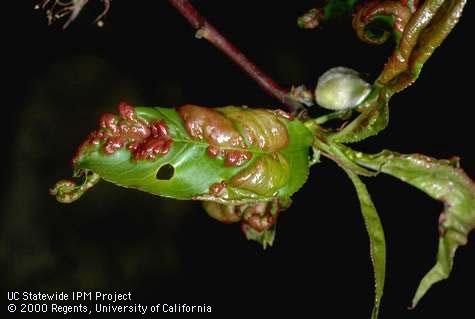

Peach leaf curl is a fungal disease that affects only peach and nectarine trees. Distorted, reddened foliage in the spring is a distinctive symptom. New leaves and shoots thicken and pucker and later may die and fall off. An infection that continues untreated for several years can lead to a tree's decline. To prevent peach leaf curl, treat peach and nectarine trees with a copper fungicide every year after leaves fall. After symptoms appear in the spring, any treatment will not be effective. When planting new trees, consider buying peach tree varieties that are resistant to the disease.
- To learn more about preventing peach leaf curl click here: http://www.ipm.ucanr.edu/QT/peachleafcurlcard.html
7. Rats

Rats eat and contaminate food, garden produce, and fruit, and transmit diseases to humans and pets. Manage rats by removing food and shelter, eliminating entryways into buildings, and trapping. Snap traps are the safest, most effective, and most economical way to trap rats. For Norway rats, place traps close to walls, behind objects, in dark corners, and in places where you have found rat droppings. For roof rats, place traps in off-the-ground locations such as ledges, shelves, branches, fences, pipes, or overhead beams. Ensure traps are out of reach of children and pets.
- Learn more about preventing and controlling rats here: http://www.ipm.ucanr.edu/QT/ratscard.html
8. Scales

Scale insects suck plant juices and are pests of many trees and shrubs. Infestations can cause yellowing or premature dropping of leaves, sticky honeydew, and blackish sooty mold. Plant parts can distort or die back, depending on the species and abundance of scales. Most plants tolerate low to moderate numbers of scales. Provide plants with proper cultural care, especially irrigation. Encourage scale predators such as lady beetles or lacewings and look for parasite emergence holes in scale covers. Use sticky barriers or insecticide baits to selectively control scale-tending ants. Consider replacing problem-prone plants because most scales are highly specific to certain plants.
- Learn more about controlling scale populations here: http://www.ipm.ucanr.edu/QT/scalescard.html
9. Snails and slugs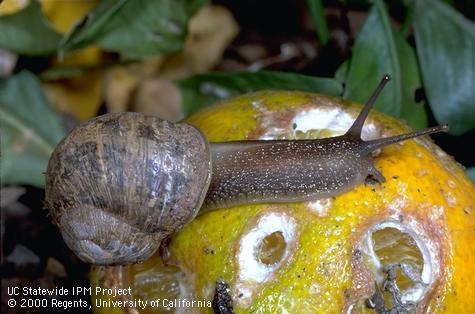

These slimy mollusks emerge from hiding at night and chew holes in leaves and flowers of many succulent garden plants and fruit. Management requires a vigilant and integrated approach that includes eliminating moisture and hiding spots, trapping, setting up barriers, and handpicking. Regularly remove snails from shelters you can't eliminate such as low ledges on fences, undersides of decks, and meter boxes. Place traps in your garden and dispose of trapped snails and slugs daily. Reduce moist surfaces by switching to drip irrigation or watering in the morning rather than later in the day. Consider snail-proof plants such as impatiens, geraniums, begonias, lantana, nasturtiums, and many plants with stiff leaves and highly scented foliage such as sage, rosemary, and lavender.
- Learn more about controlling snails and slugs with and without pesticides in your garden here: http://www.ipm.ucanr.edu/QT/snailsslugscard.html
10. Weeds in landscapes

Prevent weed invasions in new beds with good site preparation. Keep weeds out with an integrated program that includes competitive plants, mulches, and hand removal. Be particularly vigilant about removing aggressive perennial weeds. You rarely should need herbicides in established landscape plantings. Mulches prevent weed seed germination by blocking sunlight. Remove small weeds by hand before they flower and set seed. Use shallow cultivation or hoeing to remove annual weeds from ornamental plantings. Only use herbicides for special-problem situations before establishing new plantings or for difficult-to-control perennial weeds.
- Learn more about controlling weeds in your landscape here: http://www.ipm.ucanr.edu/QT/landscapeweedscard.html
To see all of the University of California's Statewide Integrated Pest Management Program's information on home, garden, and landscape pests, visit http://www.ipm.ucanr.edu/PMG/menu.homegarden.html
For other short pest “Quick Tips” like the ten above, see http://www.ipm.ucanr.edu/QT/
To read even more in-depth, peer-reviewed information on many other common home and landscape pests in California, see the Pest Notes series at http://www.ipm.ucanr.edu/PMG/PESTNOTES/index.html
Download your free UC IPM Quick Tips Booklet of the Top Ten Pests in Gardens and Landscapes and How to Control Them with the link below!
WIC food improves preschool children’s diet quality

In 2009, more fruits, vegetables, whole grains and low-fat milk were included in the food package provided by USDA's Special Supplemental Nutrition Program for Women, Infants and Children (WIC). As a result, the quality of diets improved for the roughly 4 million children who are served by WIC, according to a study by researchers at UCSF Benioff Children's Hospital in Oakland, UC San Francisco and UC Agriculture and Natural Resources' Nutrition Policy Institute.
“Although the findings only showed significant improvement for consumption of greens and beans, the other areas for which WIC has put in important efforts – increased consumption of whole fruits rather than fruit juice, increased whole grains – all show trends in the right direction,” said lead author June Tester, a physician at UCSF Benioff Children's Hospital Oakland, “and there is opportunity for further study in the future when more years have passed after this landmark change in the WIC package.”
Diets of children age 2 to 4 compared
For the UC study, which will be published in the May issue of Pediatrics journal, researchers analyzed the diets of 1,197 children, ages 2 to 4 years, from low-income households before and after the 2009 change in the food package.
The researchers used the National Health and Nutrition Examination Survey (NHANES) to compare a nationally representative sample from 2003 to 2008 with diets in 2011 to 2012. The researchers calculated the Healthy Eating Index (HEI-2010), which is a score with 100 possible points measuring adherence to dietary guidelines, from two 24-hour diet recalls. For children in households using WIC, this score increased from 52.4 to 58.3 after the policy change. After adjusting for characteristics in the sample and trends in the comparison group, the researchers showed that there was an increase of 3.7 points that was attributable to the WIC package change. This represents important evidence of an improvement in the diets for these children in WIC households.
Children don't eat enough green vegetables
“Vegetables are part of a healthful diet, but in general, children don't eat enough of them,” Tester said. Using the Healthy Eating Index, the researchers calculated the Greens and Beans score, which counts dark green vegetables and includes any legumes, such as beans and peas, that were not already counted as protein foods on a different score.
After the food package was changed, the Greens and Beans score increased for children in WIC but not for their counterparts. Roughly half of the children in WIC households had eaten some vegetables, whereas only one in five non-WIC children had consumed any green vegetables at all in the two days their parents were surveyed.
Important policy change
The change in the WIC food package is an important policy change in the effort to improve the quality of diets of young children, said Tester, a pediatrician.
Tester noted that the results of this study will be useful to the Institute of Medicine committee that is reviewing and assessing the nutritional status and food needs of the WIC-eligible population and the impact of the 2009 revision to WIC food packages. The committee will make recommendations for changing the food packages.
Establishing healthy eating patterns
“Increasing consumption of nutritious foods such as green leafy vegetables and whole grains in the low-income children served by WIC will help them establish healthier eating patterns for their future,” said co-author Patricia Crawford, UC Cooperative Extension nutrition specialist with UC ANR's Nutrition Policy Institute.
The switch from whole milk to low-fat milk was? ?well received by the clientele and did not result in decreased milk consumption among the preschoolers, noted Tester, Crawford and co-author Cindy Leung, postdoctoral scholar at UCSF Center for Health and Community.
This study is the first to report on the significant improvements in diet quality in young children associated with the WIC package change using a nationally representative sample, and the first to do so with the updated Healthy Eating Index (HEI-2010). The National Institutes for Health funded this study.
Para leer la versión en español de este artículo, visite http://ucanr.edu/sites/Spanish/Noticias/?uid=6735&ds=199.
Twenty questions that can predict obesity
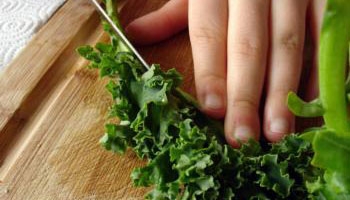
This knowledge allows professionals to quickly identify where interventions are needed to change behaviors before the children end up with chronic diseases caused by an unhealthy trajectory of weight gain.
The project was a collaborative effort involving the nutrition science laboratory of Marilyn Townsend, UC Cooperative Extension specialist based at UC Davis, and UC Cooperative Extension's Expanded Food and Nutrition Education Program educators. Funding was provided by grants from USDA and UC ANR.
The 20 questions came from a much longer Healthy Kids survey. In creating the survey, the scientists focused on young children in low-income families, which are disproportionately affected by the obesity crisis. The USDA is troubled by statistics that show that, over the last three decades, the rate of overweight and obesity has risen consistently.

“Parents have control over the children's environments. They buy the food and serve it. We looked at what parents are doing that might be impacting obesity,” Townsend said.
The researchers identified 23 dietary decisions that parents were making that seemed to contribute to their children's weight gain. The researchers then wrote 48 questions to gauge the 23 behaviors.
Developing an effective questionnaire involved extensive research and testing. Ultimately, the most effective format included pictures that looked like family snapshots, not stock photos, simple language and multiple choice questions. The survey was made available online to agencies that work with low-income families. It works, but it's long.
Streamlining the survey became the Townsend lab's next order of business.
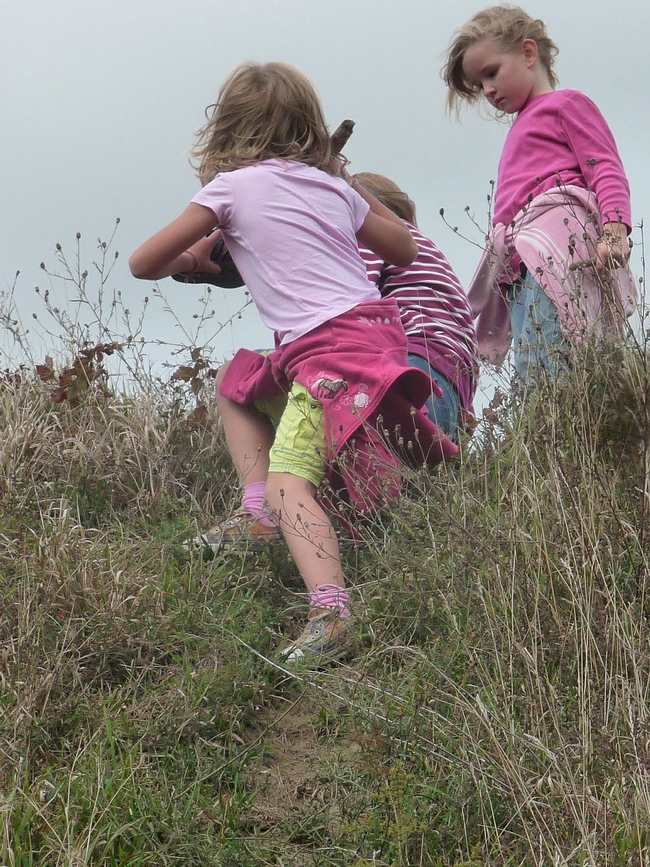
“By tracking height and weight, and comparing the changes over time, we got a clear picture which children were on an excessive weight gain trajectory,” Townsend said. “With the blood samples, we were able to look for biomarkers that are indicative of inflammation, which are related to choices in the family environment.”
Using sophisticated statistical analysis, the scientists were able to identify the 20 questions that were most indicative of unhealthful weight gain and higher incidence of biomarkers that indicated low grade inflammation in the children's blood.
|
The 20 questions are:
|
PlantRight and Master Gardeners Work Successfully to Remove Invasive Ornamentals from Nurseries
Through Sustainable Conservation and the California Horticultural Invasives Prevention (Cal-HIP) committee, the PlantRight campaign was founded in 2005. PlantRight has brought together leaders from the nursery industry, environmental groups, and academics. Its goal is to address the ongoing sale of...

